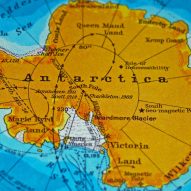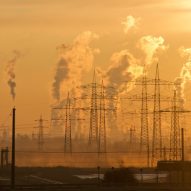 March 14, 2023 4:53 pm
Published by Climate Extremes
March 14, 2023 4:53 pm
Published by Climate Extremes
This high impact flooding was a compound event, an event caused by multiple hazards or drivers.
 March 14, 2023 4:29 pm
Published by Climate Extremes
March 14, 2023 4:29 pm
Published by Climate Extremes
The average temperature over Australia has warmed by 1.47± 0.24°C since 1910.
 March 14, 2023 4:21 pm
Published by Climate Extremes
March 14, 2023 4:21 pm
Published by Climate Extremes
As the climate continues to warm, more and more ice shelf collapses are forecast to occur, potentially leading to an acceleration of sea level rise.
 March 14, 2023 4:18 pm
Published by Climate Extremes
March 14, 2023 4:18 pm
Published by Climate Extremes
Heatwave conditions are expected to continue to worsen as the climate warms. The ARC Centre of Excellence for Climate Extremes is continuing to research links between heatwaves and weather systems, soil moisture and climate change.
 March 14, 2023 4:12 pm
Published by Climate Extremes
March 14, 2023 4:12 pm
Published by Climate Extremes
We will need a longer time record to be able to identify a climate change signal in Antarctic extreme events.
 March 14, 2023 4:06 pm
Published by Climate Extremes
March 14, 2023 4:06 pm
Published by Climate Extremes
Rapid declines in sea ice from spring 2021 continued, leading to record low extent in late summer 2021-22.
 March 14, 2023 4:05 pm
Published by Climate Extremes
March 14, 2023 4:05 pm
Published by Climate Extremes
By the end of the first week of March, both Queensland and New South Wales had received more than a year’s worth of rain in a month.
 March 14, 2023 3:59 pm
Published by Climate Extremes
March 14, 2023 3:59 pm
Published by Climate Extremes
The ARC Centre of Excellence for Climate Extremes is continuing to research and understand the drivers of these sea ice extreme events and sea ice predictability.
 March 14, 2023 3:33 pm
Published by Climate Extremes
March 14, 2023 3:33 pm
Published by Climate Extremes
It is unequivocal that the increased CO2 in the atmosphere is warming our climate.
 March 14, 2023 2:00 pm
Published by Climate Extremes
March 14, 2023 2:00 pm
Published by Climate Extremes
While Australia experienced record breaking flooding; heat waves, wildfires and drought swept across the Northern Hemisphere.










